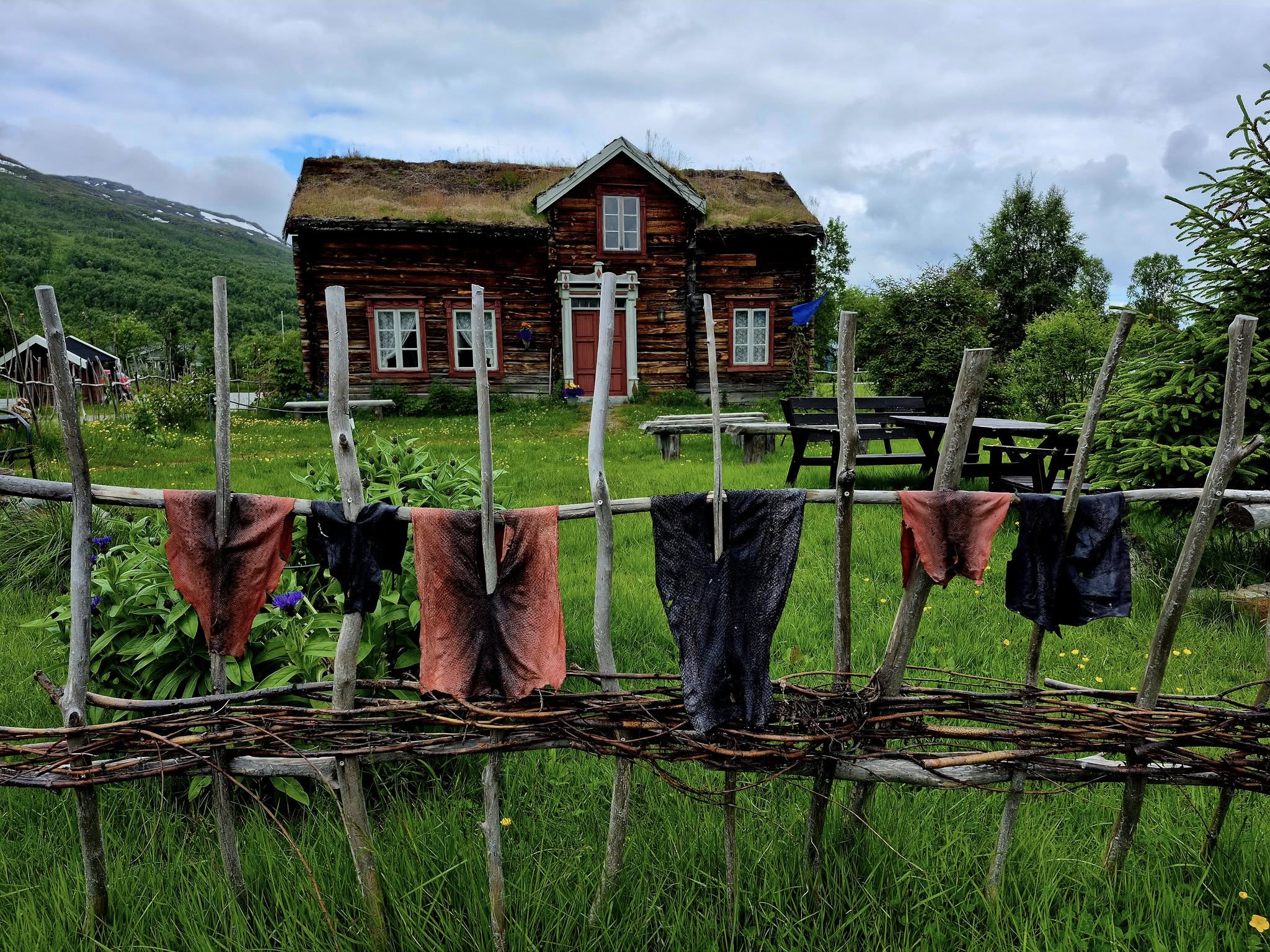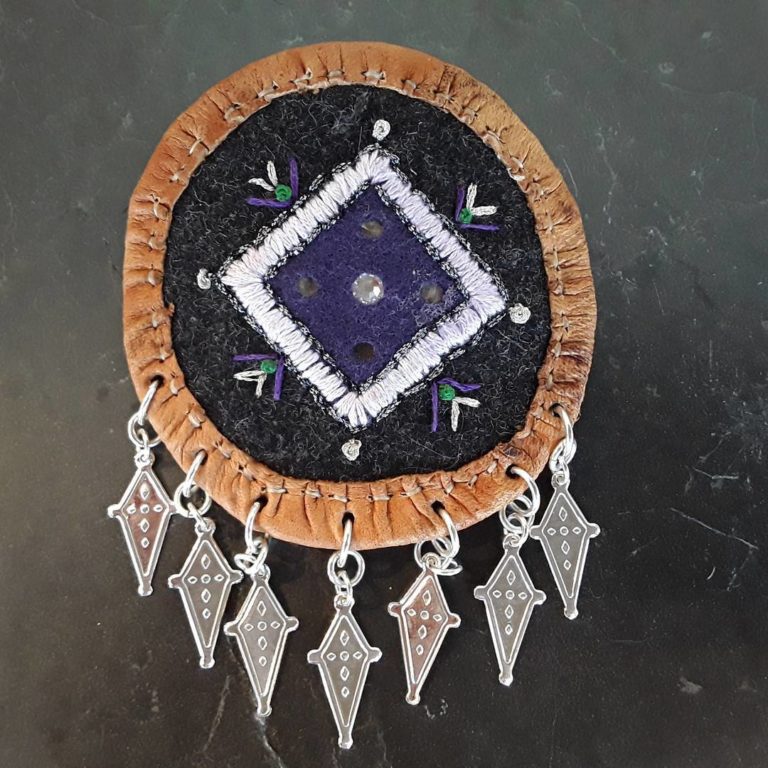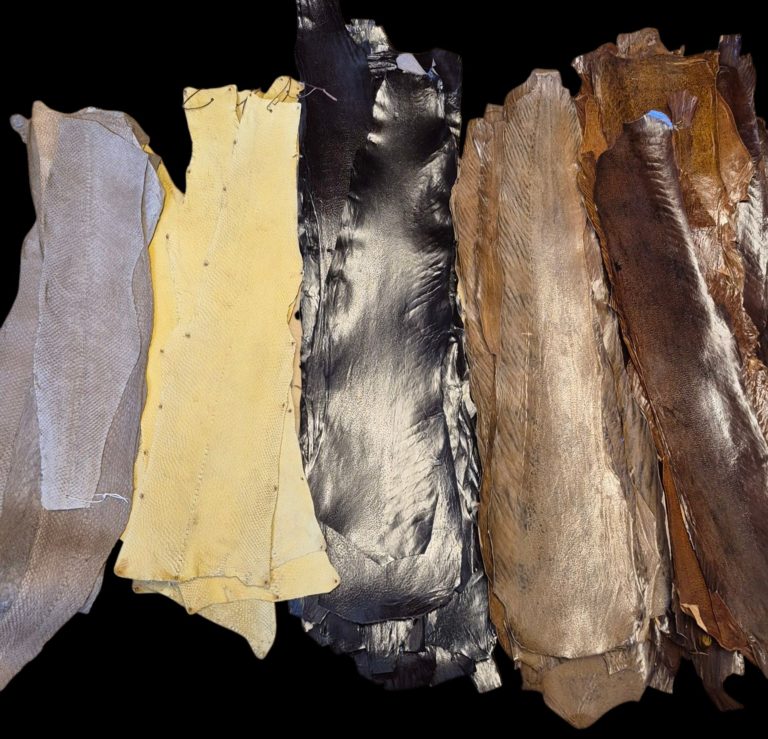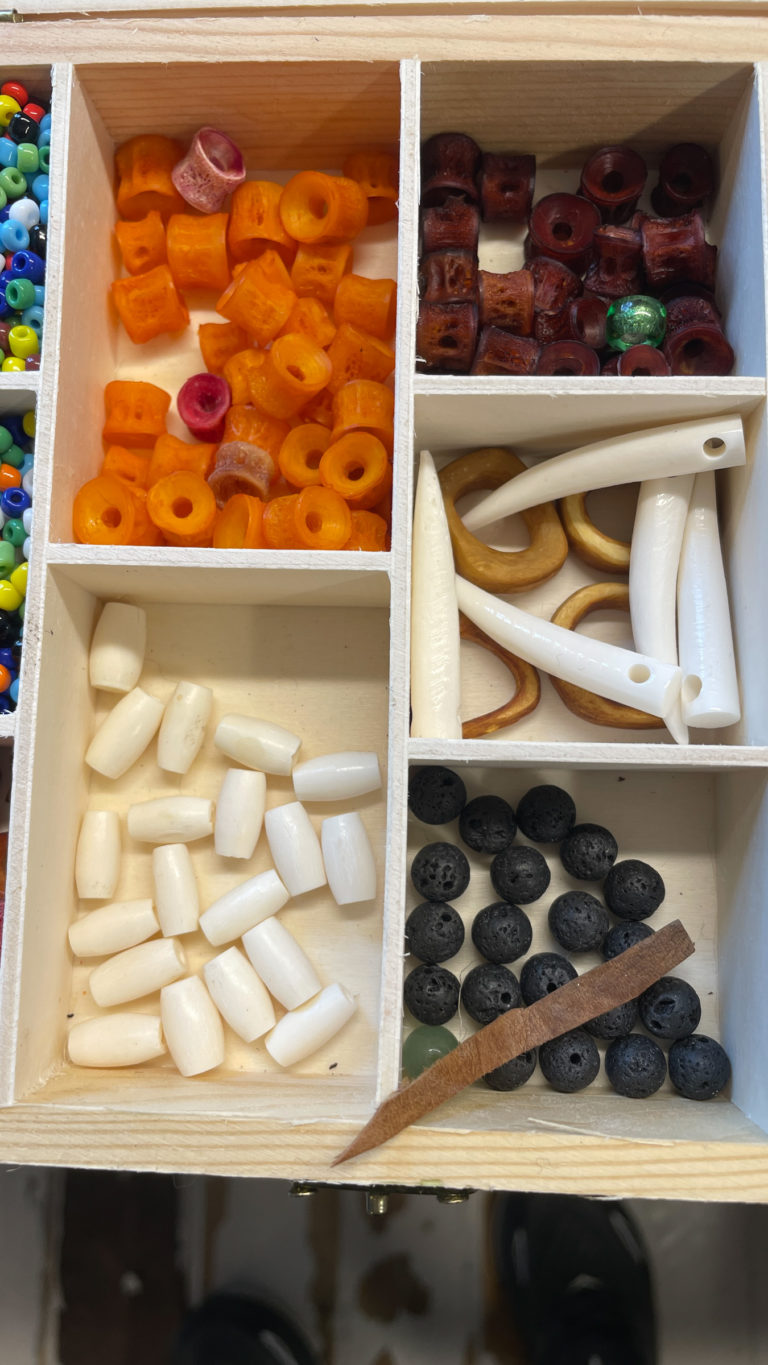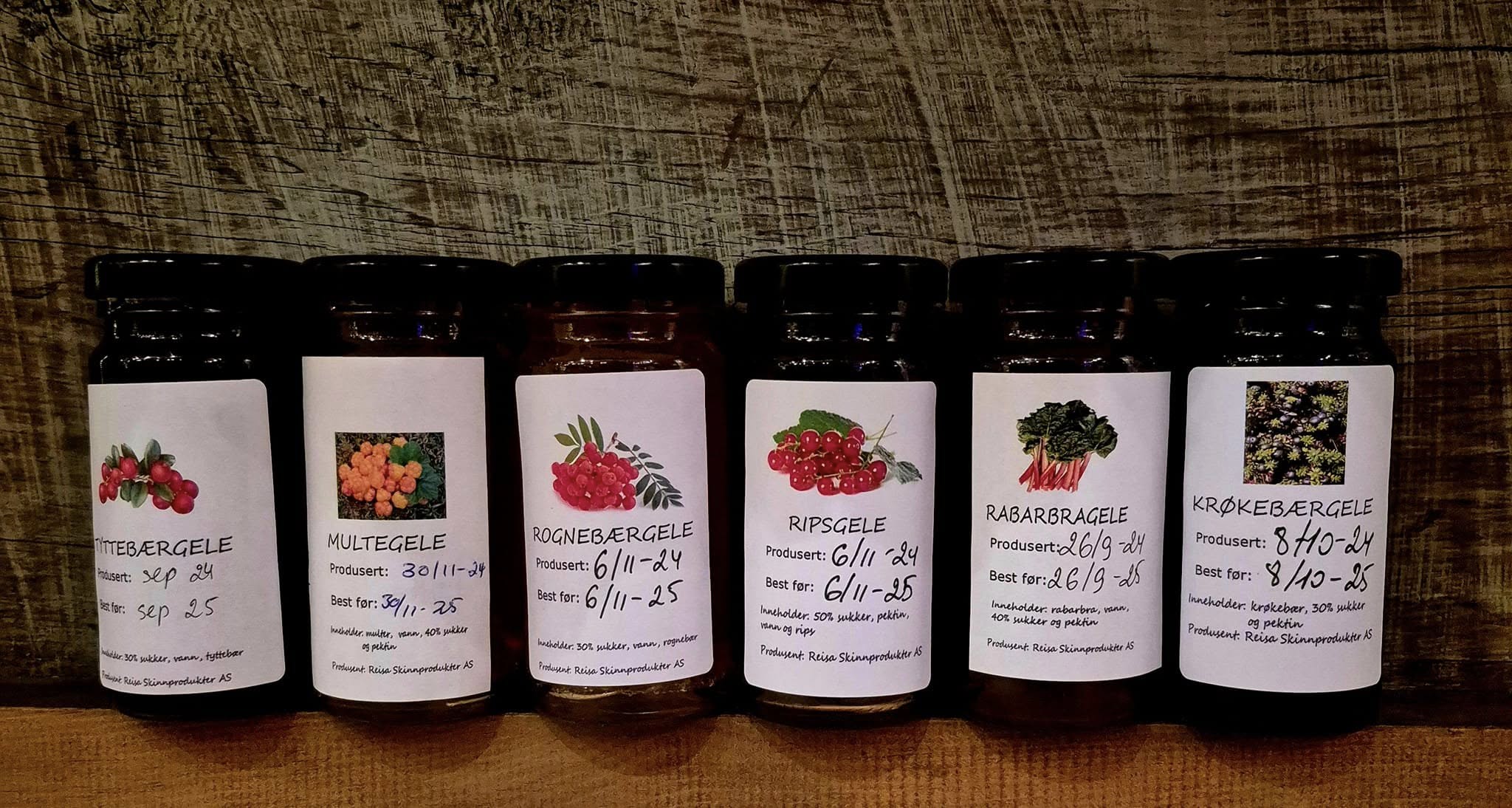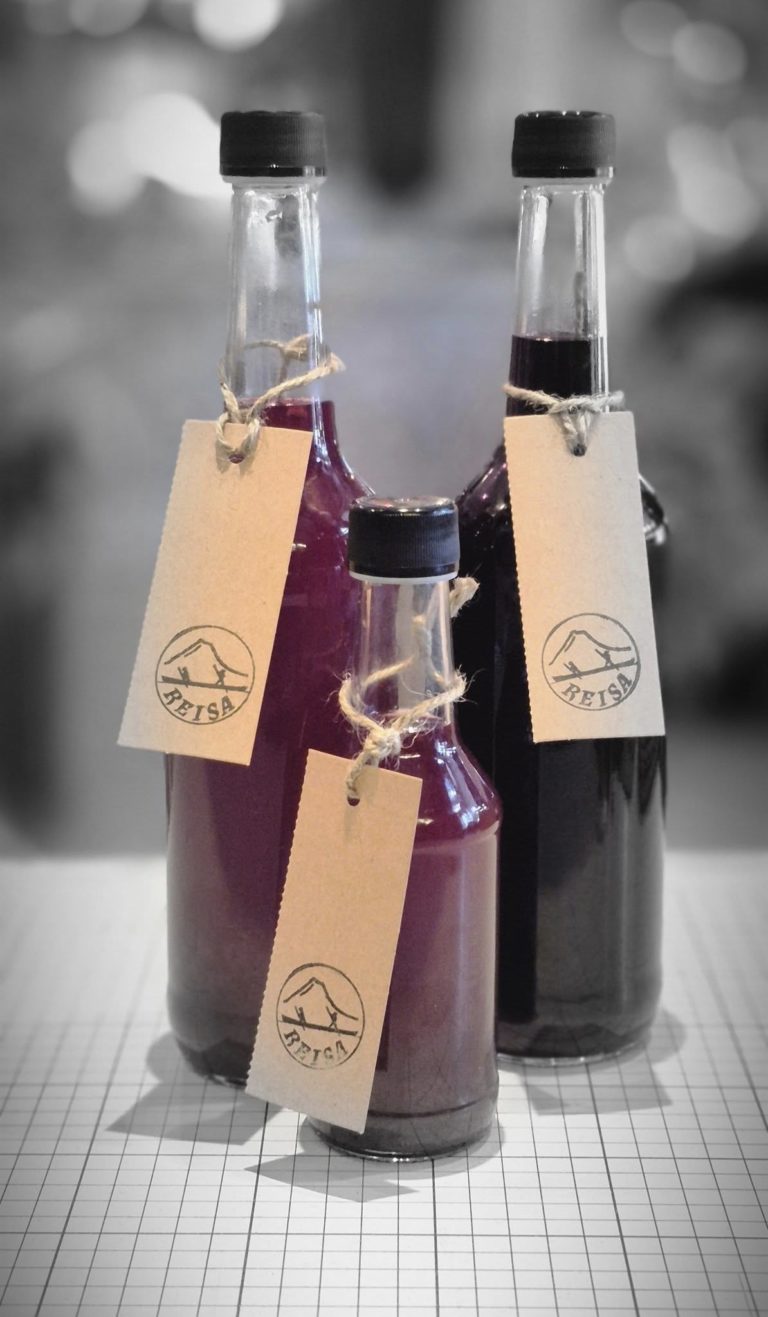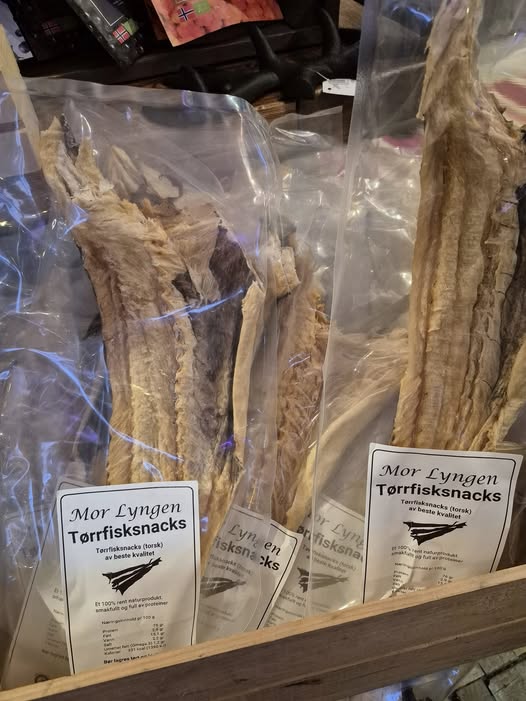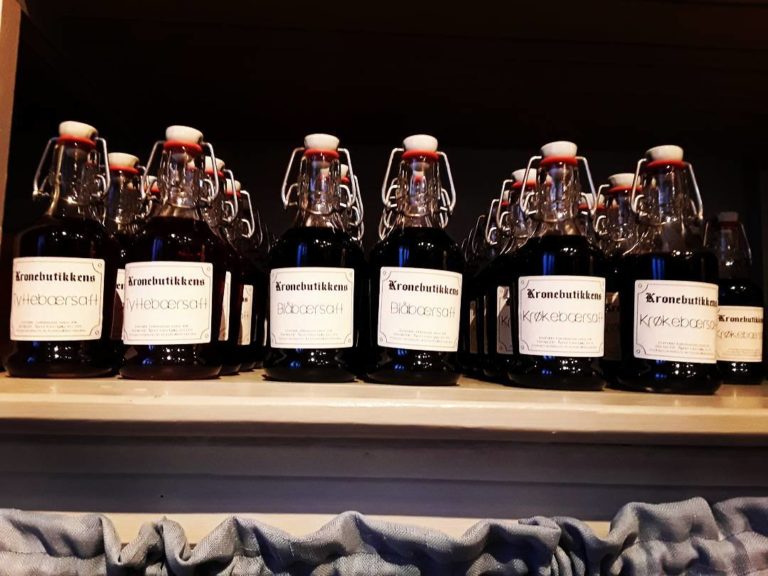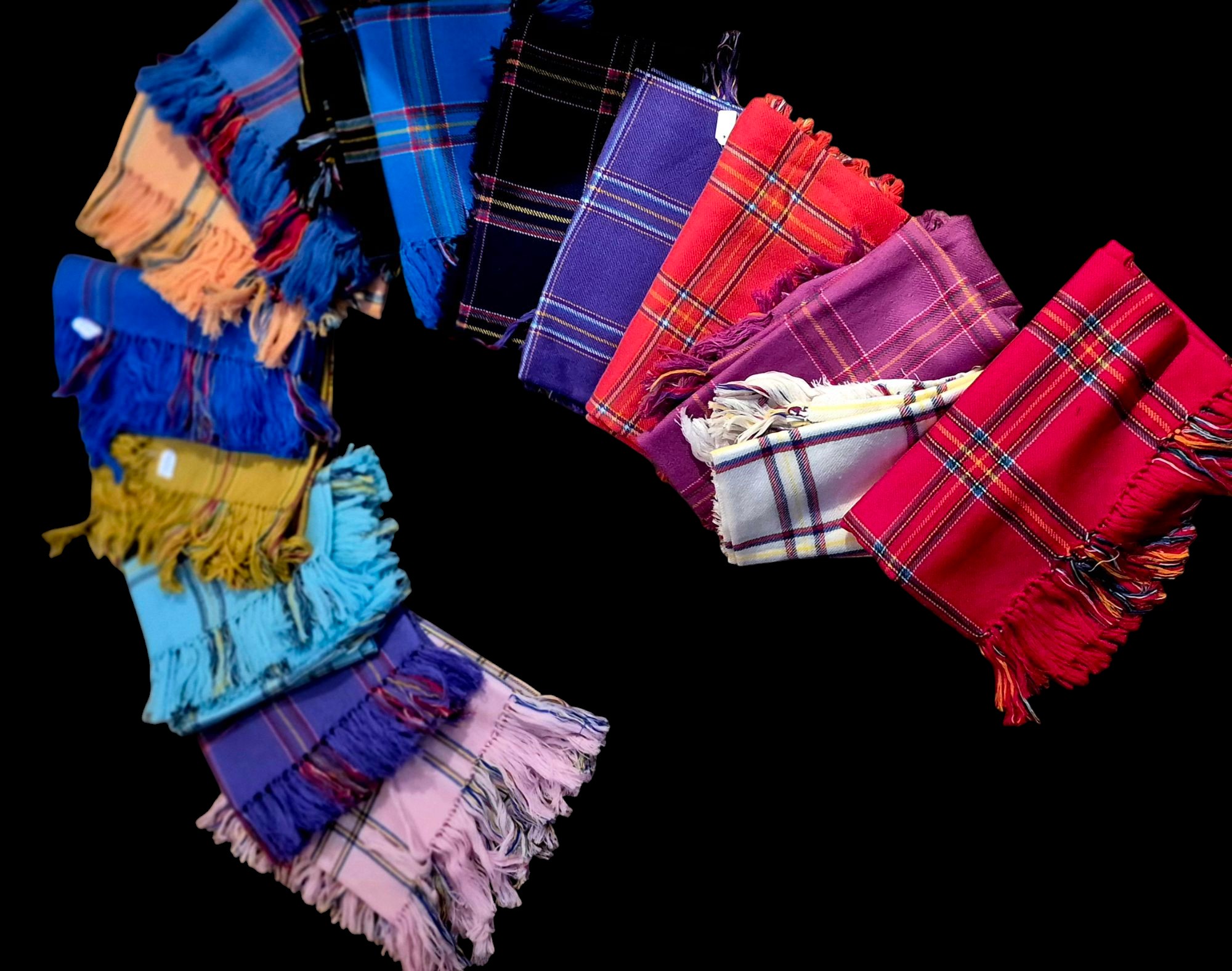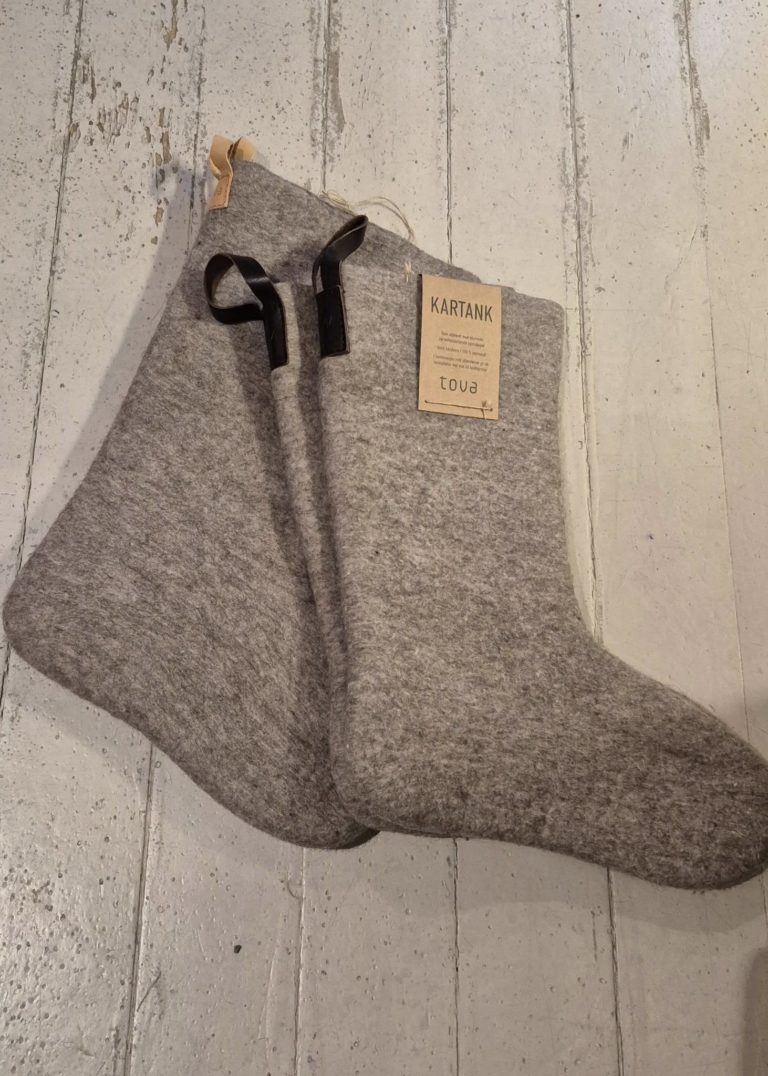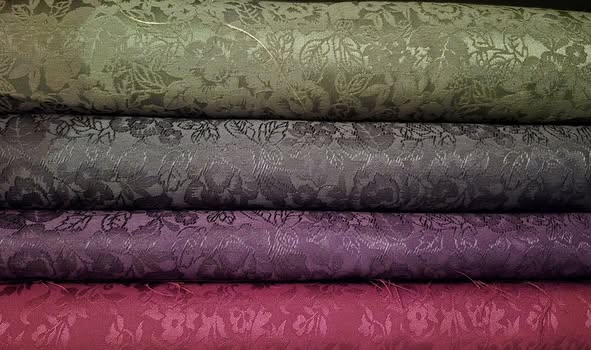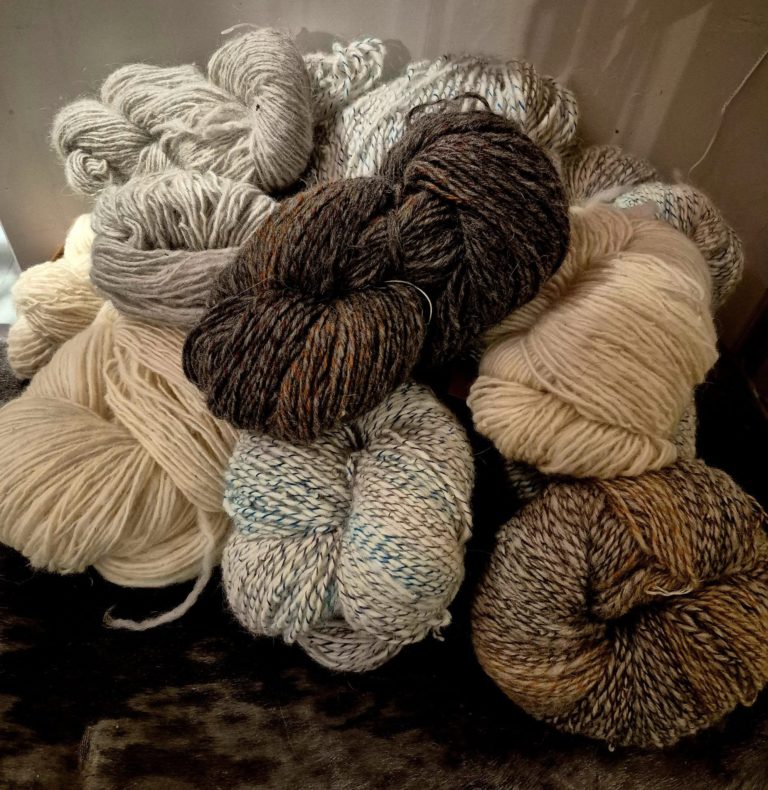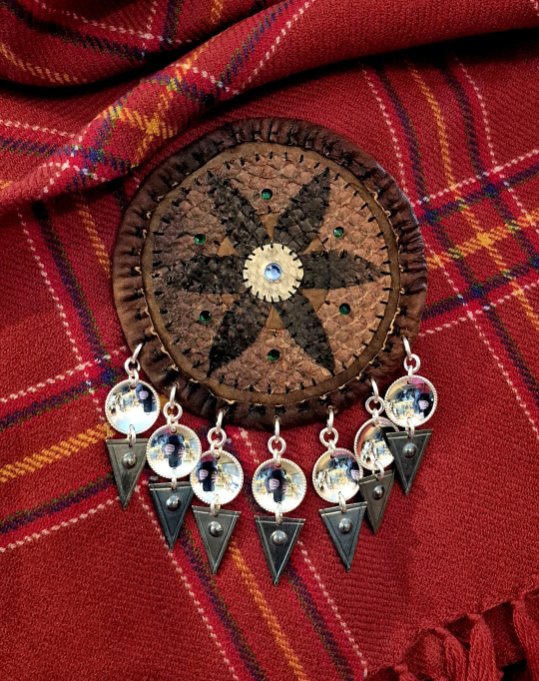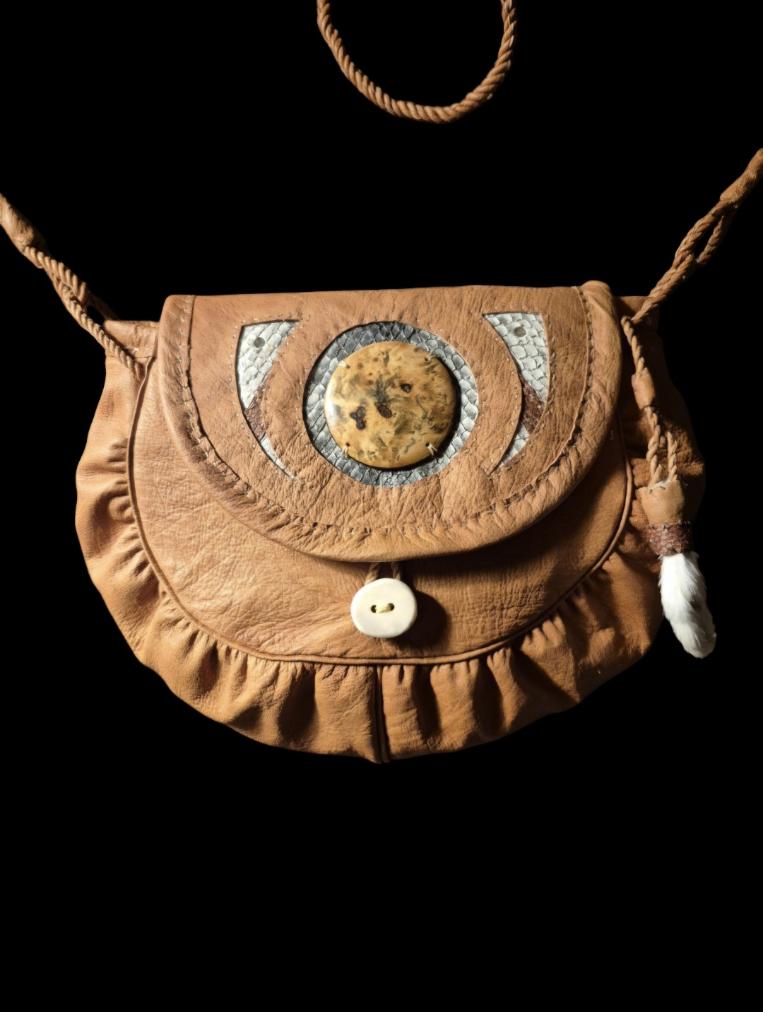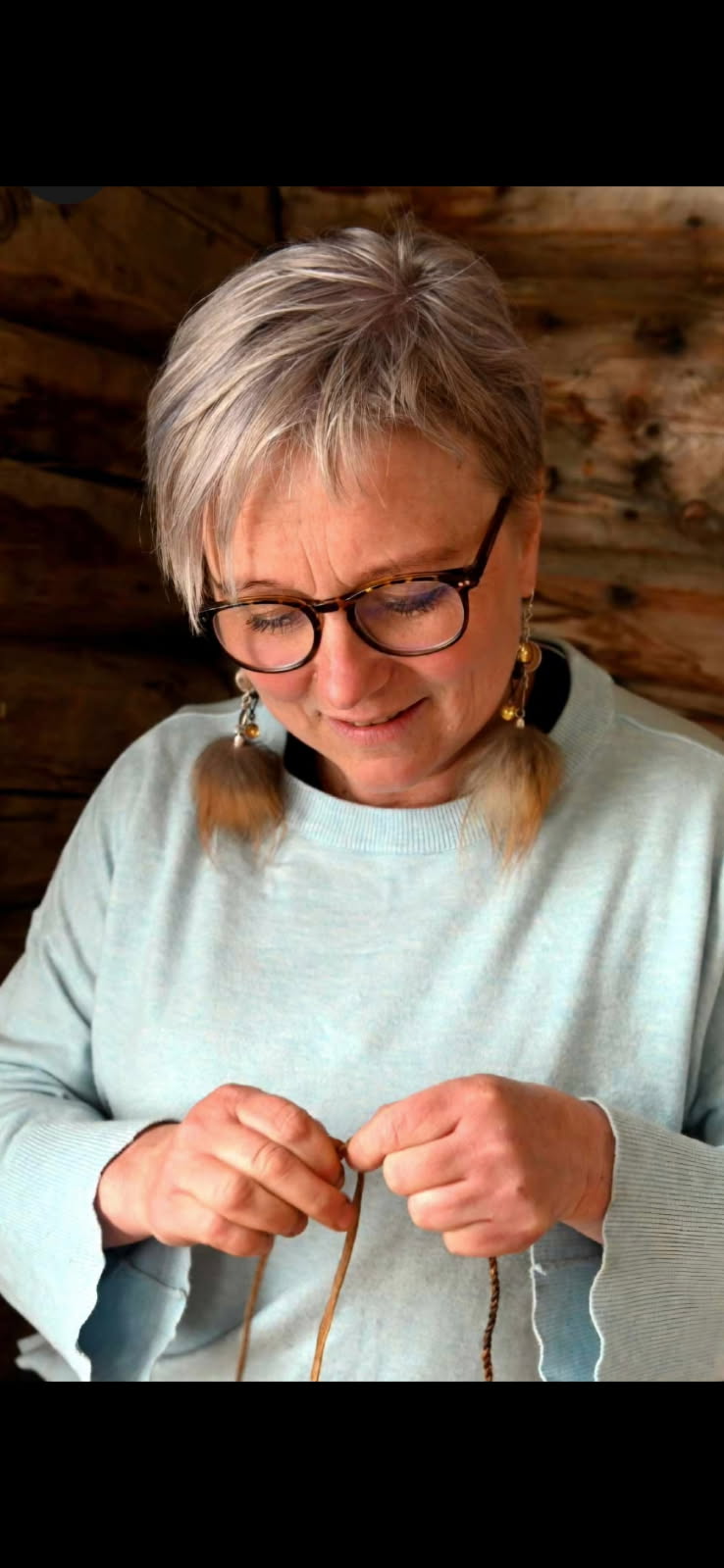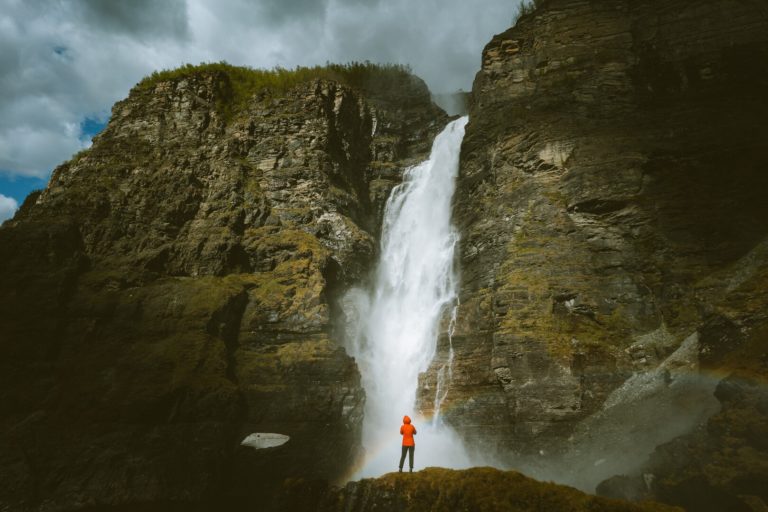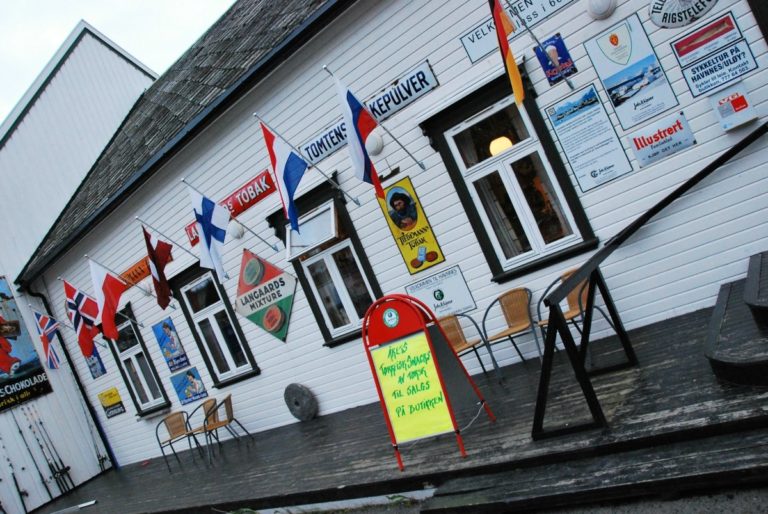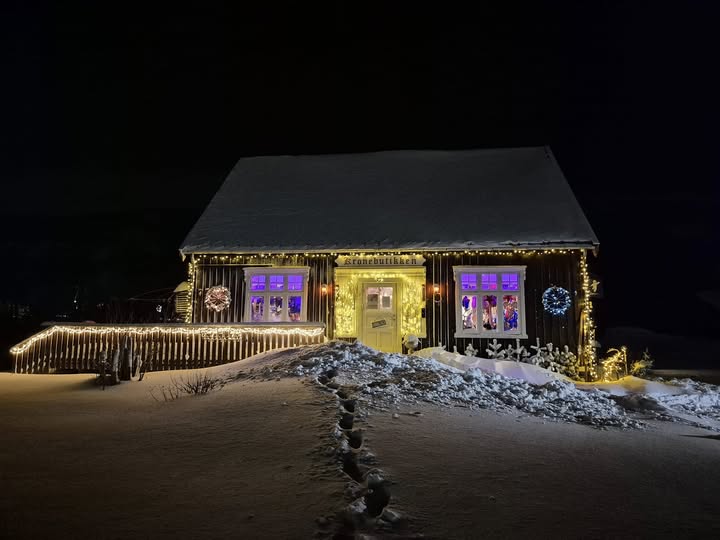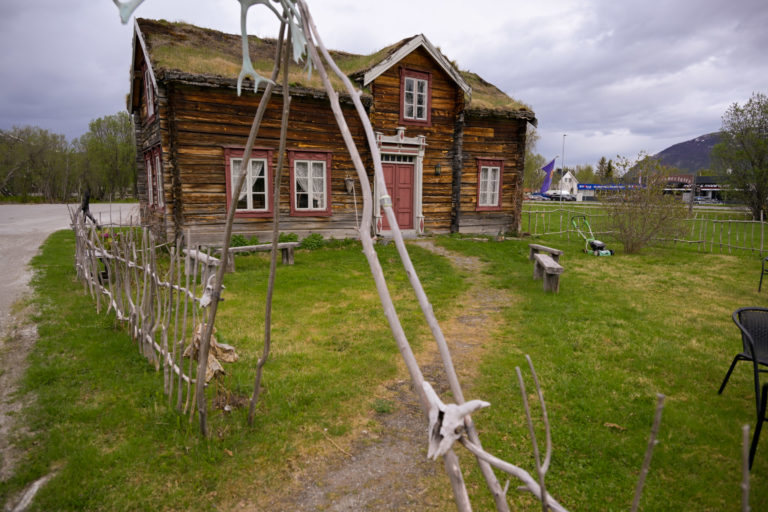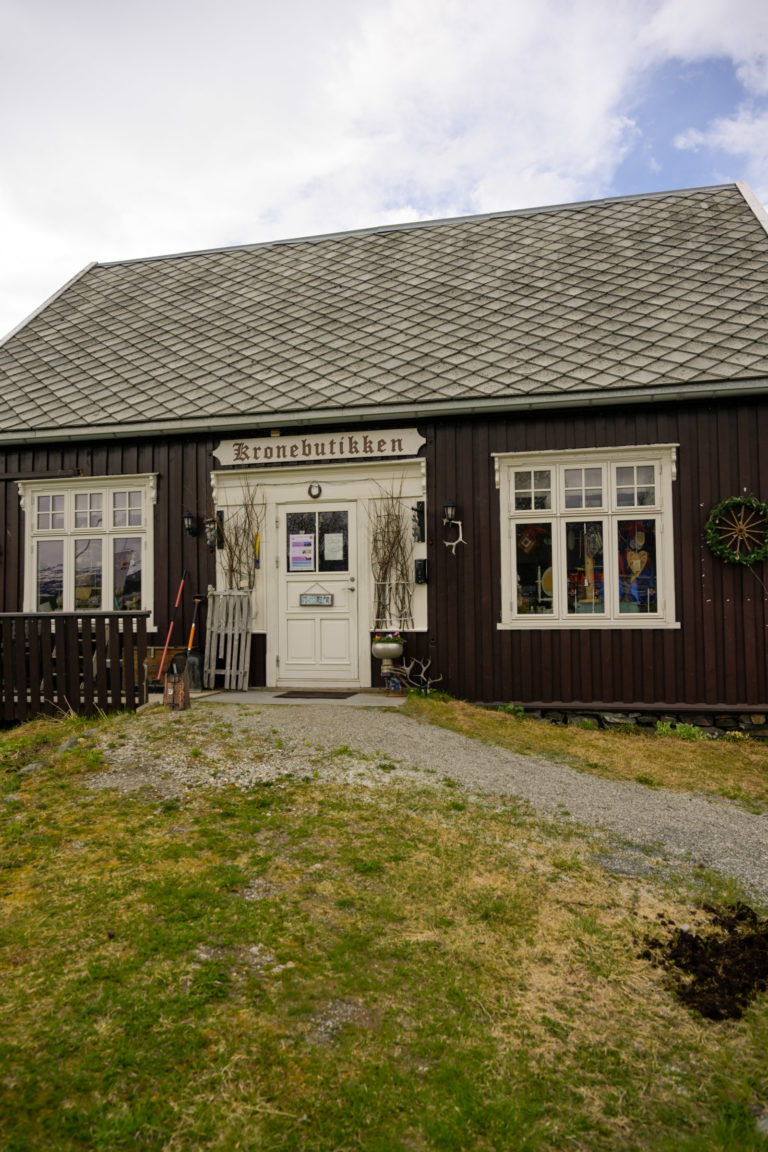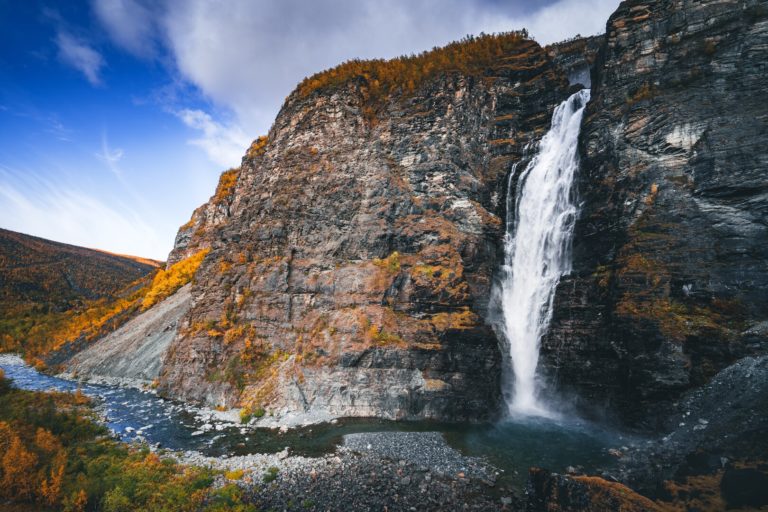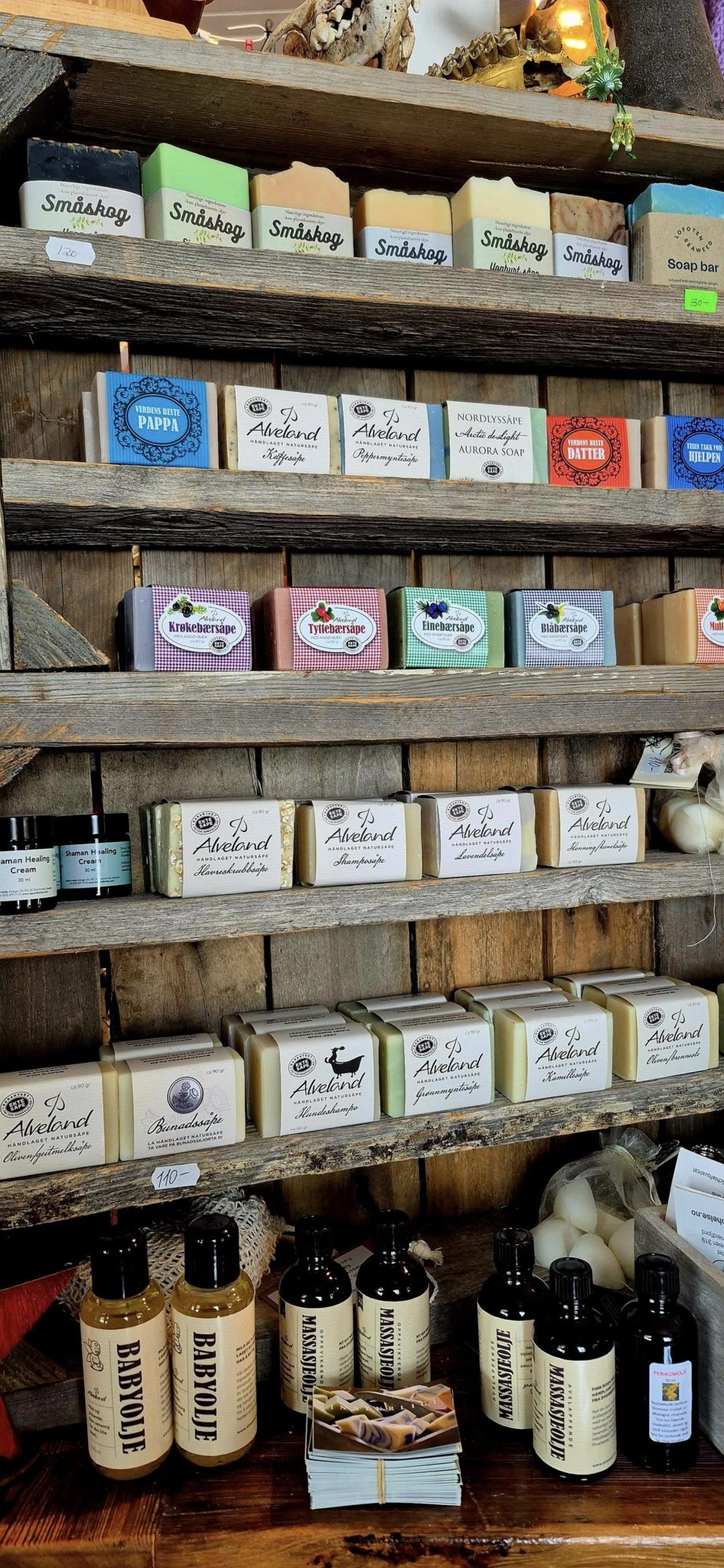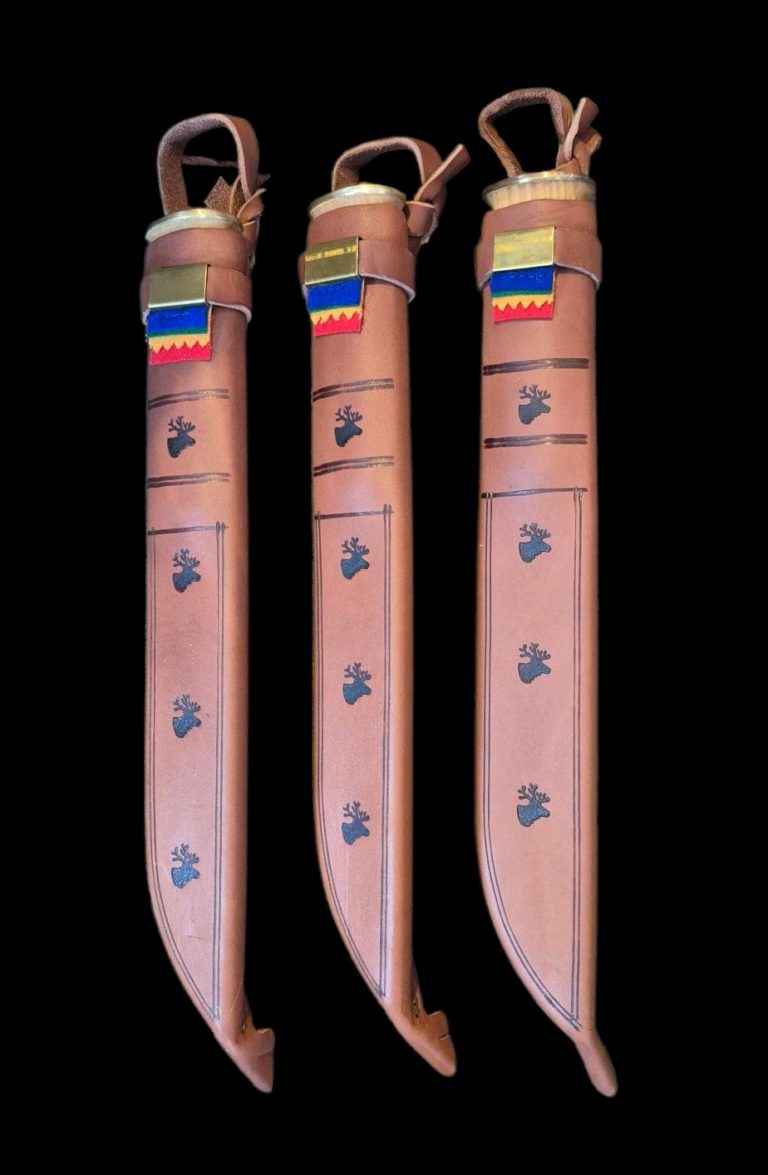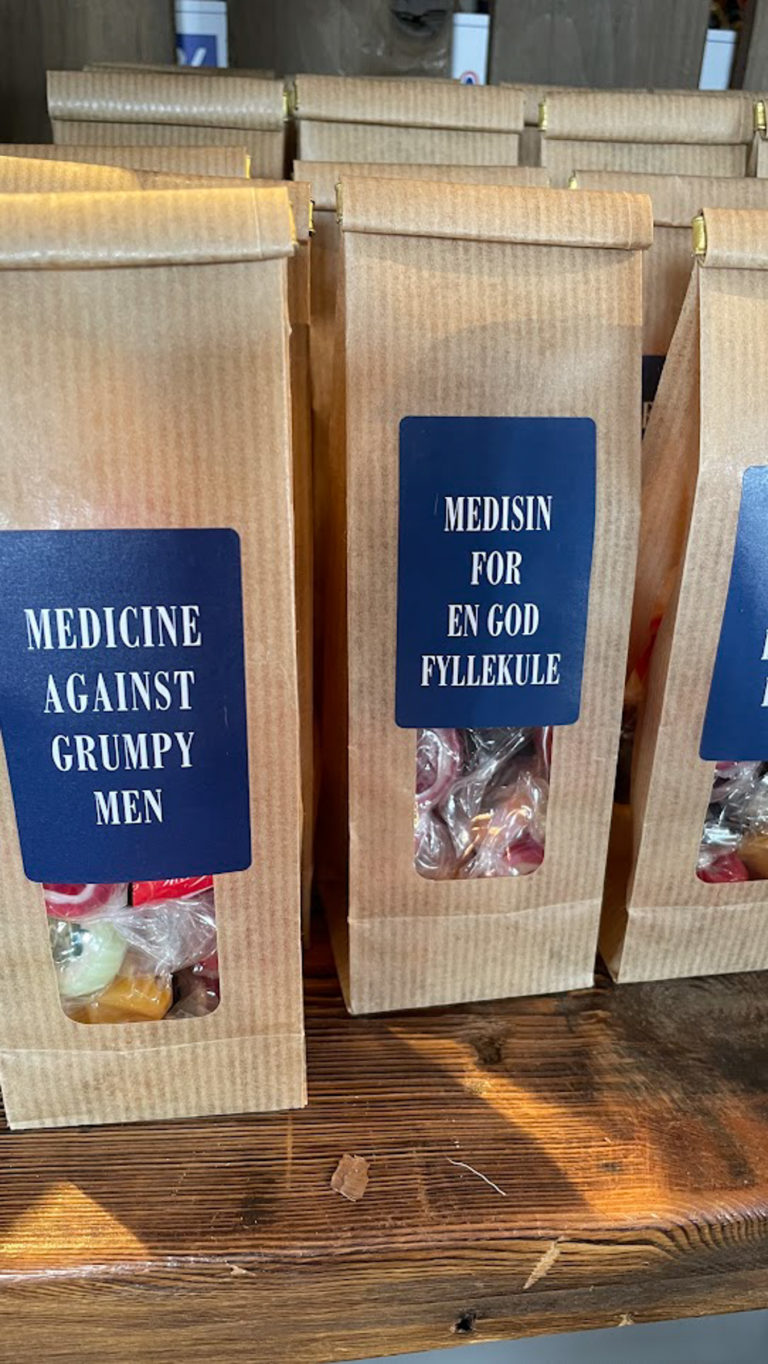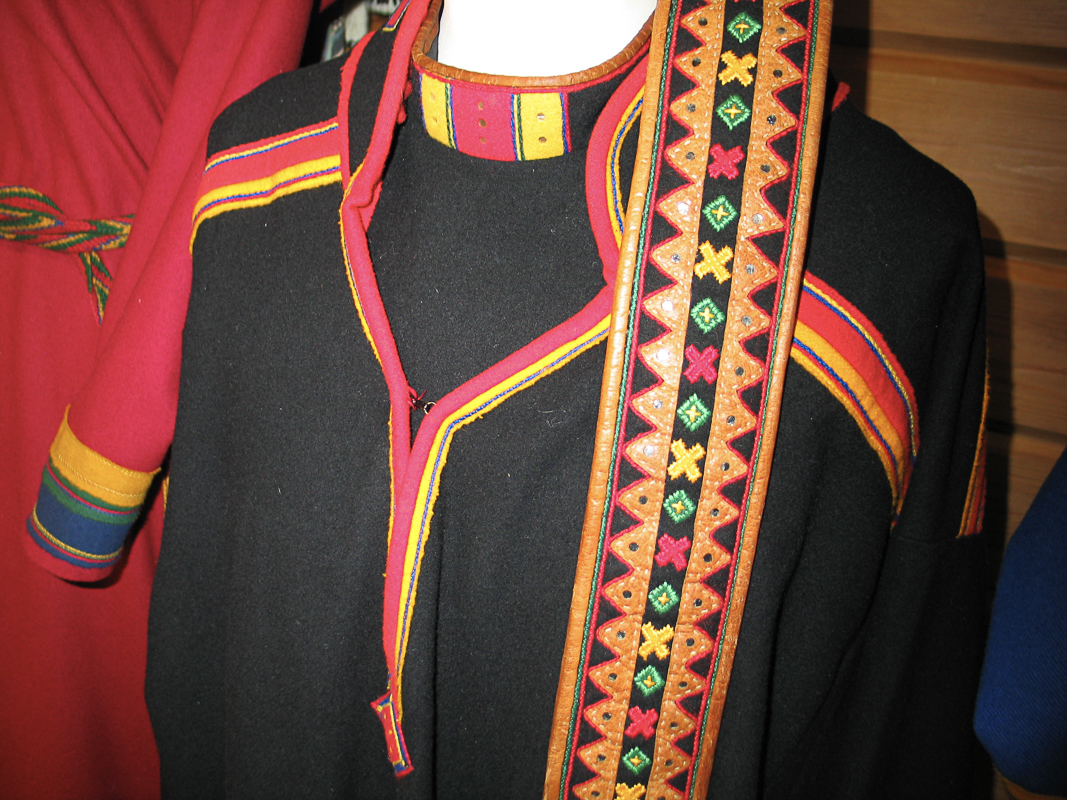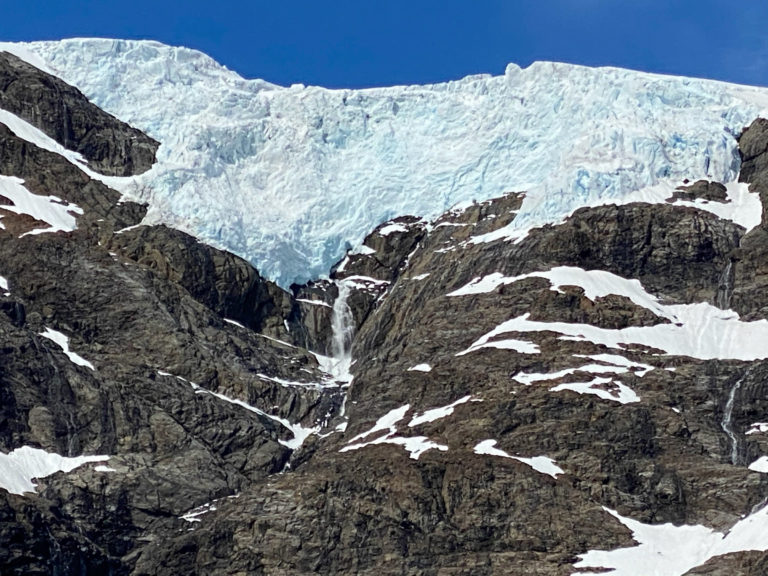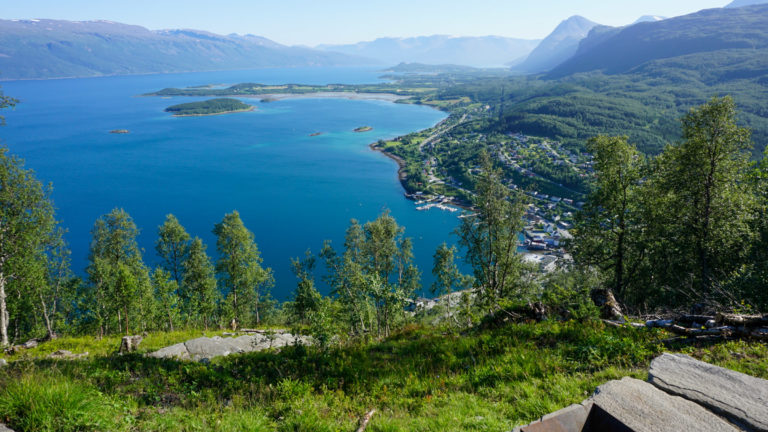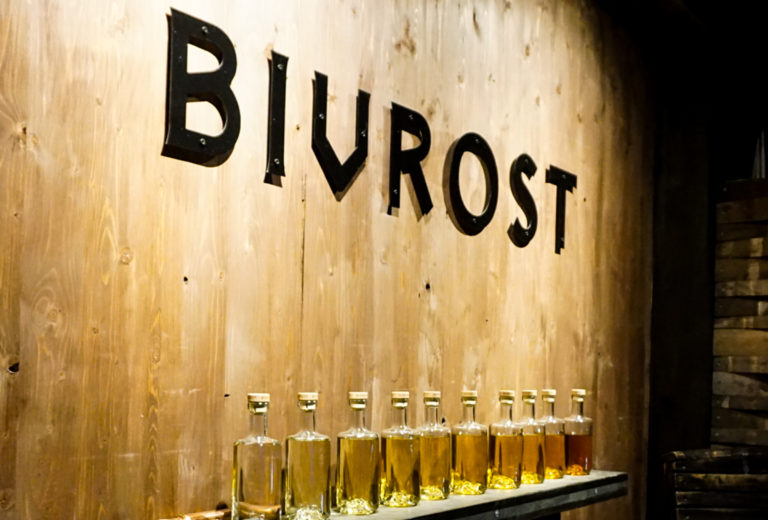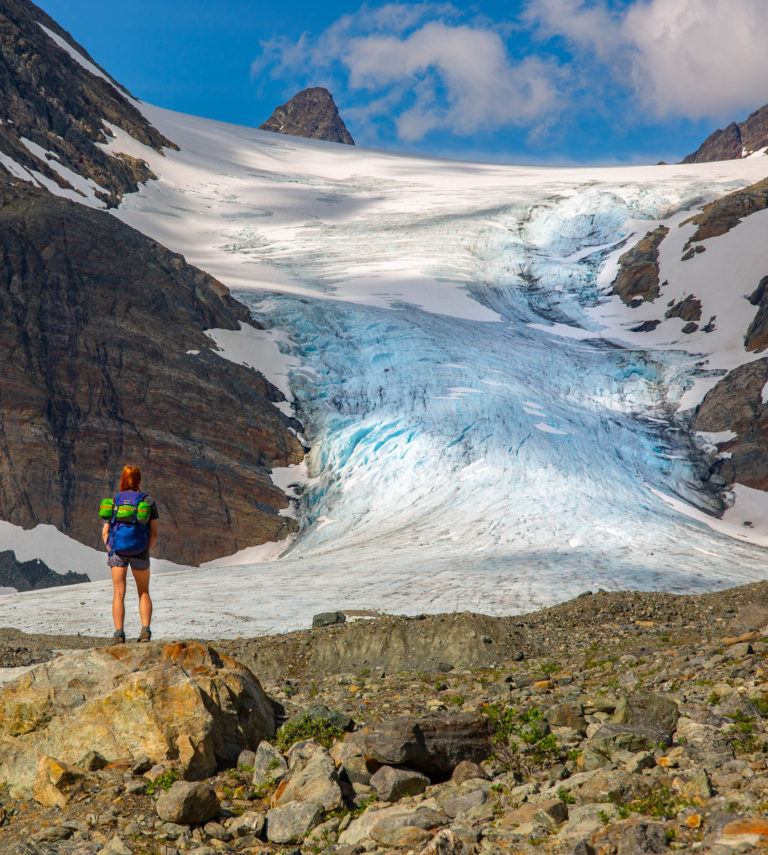“Want some coffee?” Hilde asks as I introduce myself. Here in the north, black coffee oils the chatterbox and sets stories in motion – and Hilde has plenty to tell.
About old crafts, about bone, hoof and wool. About food from mountain and fjord – and from her own garden. Patterns, ideas, the things visitors say… all shared without a trace of boasting.
I take a look around – and breathe in the smell. That deep, earthy mix of wool and leather. The colours shift from soft, natural tones to bolder shades, arranged in beautiful patterns. They hang from the ceiling, lie folded on worn wooden shelves, and spread across the old store counter. My eyes keep drifting.
I realise I’ve stepped into a treasure chest of old craftsmanship, tucked inside a country store from another time.
Duojar – Old Techniques, New Expressions
For Hilde, it’s all about traditional techniques – how things used to be made, and how that knowledge can be kept alive. In Sámi, handicraft is called duojar, and there were many ways of making things by hand in the old Sámi tradition. Hilde knows them well – and often uses them in her own way, giving old methods a new voice.
Make Use of the Whole Animal
When an animal has died for us, we owe it respect – and that means using every part. Hilde turns salmon vertebrae into delicate beads for embroidery, and reindeer hooves into striking pieces of jewellery. Burls – those knotted growths on trees – become beautifully carved drinking vessels, both useful and decorative.
She is also a master of reindeer hide work, offering classes in how to flesh, dehair, cure, tan and soften the pelts. The result is supple reindeer leather, which she may shape into her own version of the traditional Sámi filigree brooch – or turn into large, fluffy fur hats, ideal for crisp winter days below minus ten.
Even fish skin – mostly salmon and wolffish – finds its place in her workshop.
Their lively, dotted patterns add character to handbags and make bold accents on larger garments.
Select Delicacies from Nordreisa
When I visited, the garden was just waking from an unusually cold spring.
Currants were blooming with small, green, almost invisible flowers.
The rhubarb leaves were still clenched like fists, not yet ready to unfold.
Indoors, the tomato plants waited patiently for gentler summer winds.
A jar of redcurrant jelly to go with roasted meats. Some rhubarb jam for your waffles.
Hilde makes fresh little delights from frozen berries and herbs throughout the winter.
And of course, there’s no shortage of sweets, herbs, oils and jams from other local producers. They make perfect gifts for those of us who already have more trinkets than we need.
A visit to the website offers a glimpse into the passing seasons: depending on the time of year, you might find frozen halibut, redfish, or goat sausage. This is not a place where everything is available all the time – it follows the inherited rhythm of the land.
Dress to impress in the north
Hilde works closely with local knitters, selling mittens made by women from the area. Up here, we prefer mittens to gloves – fingers stay warmer when they’re together. Colourful and patterned, these mittens would look just as charming on a winter evening in Paris as they do here.
Not much use down south, but in Arctic cold, kartanker are a winner – thick felted wool liners worn in Sámi footwear or modern boots. Everyone here, regardless of background, uses them to stay warm outdoors – especially when ice fishing. If you’re planning to spend time outside, your toes will thank you.
A colourful shawl is part of traditional Sámi gákti, but also seen in the clothing of Kven and Norwegian women. Some were homespun from wool; others, silk shawls bought at markets. Today, old ways of dressing are finding new admirers – and a bright shawl can turn everyday wear into something quietly joyful.
Kronebutikken is part of an old ensemble
At the end of 1944, the people of Nordreisa were forcibly evacuated, and nearly all houses were burned in the scorched-earth tactics of the retreating Wehrmacht forces. Because the population lived in scattered communities, some farms and houses were spared.
In the 1990s, a few old houses were relocated from around the municipality. Together, they form a small cluster quite different from the colourful post-war houses in Sørkjosen and Storslett. Kronebutikken is one of them – a timber-built general store that once stood by the river, now carefully restored.
The building next door, dating back to the 1850s, is the oldest. Its exposed log construction makes it a typical farmhouse from the hamlet of Sokkelvik. Today, it serves as a summer gallery for local artists.
A place with a good feel
‘I was invited into the back room of the shop for a closer look at the vertebrae beads. It was a bit cluttered — no worse than my own office desk, though — as often happens when you’re juggling several things at once. Hilde told me about one of her frequent visitors — Queen Sonja — who once announced a visit at short notice. Hilde had said, “But the place is a mess,” to which the Queen replied, “That’s not why I’m coming.”
I left Kronebutikken feeling as though I’d just visited a friend — someone generous with both stories and time.
Good to know?
You find Kronebutikken in the village of Sørkjosen. Sørkjosen has merged with the slightly bigger village of Storslett to form the centre of the Municipality of Nordreisa, more than halfway between Tromsø and Alta. If you drive along the E6, you find it opposite the road leading down to the little airport of Sørkjosen (SOJ).
Kronebutikken is a place to see traditional handicraft from Northern Troms. You don’t have to buy anything at all, but there are many small gifts in the shop that don’t fill up your suitcase too much. If you practice handicraft yourself, you will also find craft materials. There are also many unique clothing items.
The shop has normal Norwegian opening hours. For details about holidays – when Norway tends to close down earlier – or longer opening hours in connection with notably Black Friday, consult their Facebook page.
